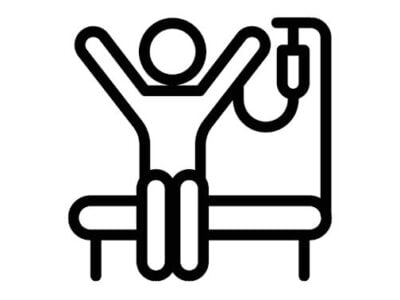
Wearables market sees growth spurt from new product launches
Global shipments of wearable devices reached 32.0 million units in the third quarter of 2018, up 21.7% from the previous year. In addition to new product launches, says the firm, growth was driven by growing demand in markets like Asia/Pacific (excluding Japan), which accounted for more than half of all shipments and grew 21.4% over the previous year.
In the United States, the second largest market, year-over-year growth declined 0.4% as it transitions from a market driven by new users to one that relies on replacement devices and upgrades.
“Many of the new basic wearables include features like notifications or simple app integrations that bleed into smartwatch territory,” says Jitesh Ubrani senior research analyst for IDC Mobile Device Trackers. “This has helped satiate consumer demand for more capable devices while also maintaining average selling prices in a market that faces plenty of downward pressure from low-cost vendors and declining smartwatch pricing.”
“However,” says Ubrani, “this resurgence of basic wearables should be watched closely as these wearables have historically been popular due to their low-price points and simplified set of features. As more features get added and as the price differential between basic trackers and smartwatches narrows, brands could potentially move consumers upstream to smartwatches.”
According to the firm, the smartwatch market also evolved during the quarter as the two largest smartwatch brands – Apple and Fitbit – continued to push into the healthcare market, which is quickly becoming “the next frontier” for wearables. With heavy regulation and greater scrutiny, IDC expects this segment to be able to stave off value brands, allowing the market leaders to further cement their lead.
“The wearables market benefits from geographic differences,” says Ramon T. Llamas, research director for IDC’s Wearables team. “China – the largest market for wearables and more than double the size of the U.S. market – has grown thanks to strong device development and experimentation, low-cost products, and strong demand for basic devices to draw in new users.”
“Meanwhile,” says Llamas, “the U.S. market – while slowing down – presents an opportunity for vendors to offer more featured and higher-priced devices to current users and possibly to recapture old ones. In between the two markets are many other countries in various states of development, and this allows vendors to take different approaches to meet demand. Combine these geographic differences with the new product announcements and releases, and the stage is set for a strong holiday quarter.”
The top five wearables companies in 3Q18 are as follows:
- Xiaomi grabbed the top spot thanks to the success of its Mi Band 3 and significant expansion beyond its home country of China.
- Apple launched its Series 4 Watch – its first watch approved for medical use – toward the end of the quarter. While the new design and sizes along with the latest version of Watch OS were welcome changes, the latest series only accounted for less than 20% of all Apple Watch shipments. The reduced price on the still available Series 3 accounted for the majority of Apple’s shipments during the quarter.
- Fitbit’s latest devices, including the Versa, Charge 3, and the Ace, helped the company slow its decline compared to previous quarters. In particular, the success of the Versa has allowed the company to once again become the second largest smartwatch vendor and IDC expects this to continue in the near term.
- Huawei finished just ahead of Samsung to maintain its number four position worldwide, emphasizing its newest TalkBand B5 series of wristbands, combining a Bluetooth earpiece with a fitness tracker. Meanwhile, its Honor sub-brand introduced a new set of earphones that tracks heart rate during workouts.
- Samsung launched its next-generation smartwatch, the Galaxy Watch, marking the first time that a wearable device moved away from its traditional “Gear” moniker to the “Galaxy” sub-brand, alongside its smartphones and tablets.
For more, see The Wearable Vendor.
Related articles:
Smartwatches, Bluetooth headsets to drive wearables market to 2021
New wearables leader Xiaomi overtakes Apple, Fitbit
Fitbit wearables chosen for NIH precision medicine study
Qualcomm expects $1B from IoT, smart wearables chips
Qualcomm doubles down on wearables
 If you enjoyed this article, you will like the following ones: don't miss them by subscribing to :
eeNews on Google News
If you enjoyed this article, you will like the following ones: don't miss them by subscribing to :
eeNews on Google News




